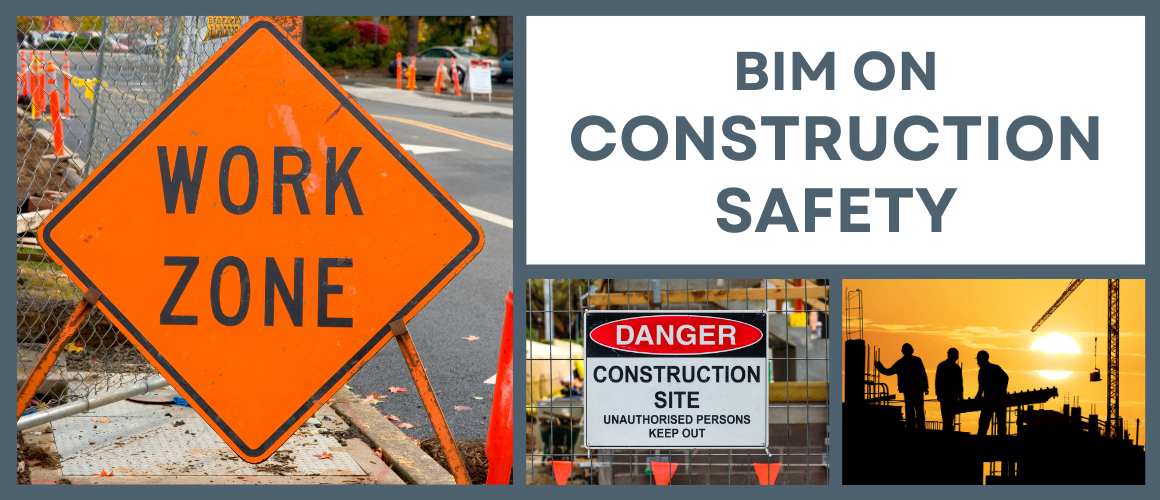
How BIM can Improve Safety on Construction Sites
Imagine walking onto a construction site knowing that every detail, every piece of the puzzle, is mapped out in a way that keeps everyone safe. That's what Building Information Modeling, or BIM, brings to the table. It's like having a digital blueprint that not only shows where everything goes but also predicts and prevents accidents before they happen. Now, consider this: every year, accidents at construction sites claim lives and cause countless injuries. BIM steps in as a game-changer, aiming to drastically lower those numbers by making sites safer for everyone involved. It's not just about building structures; it's about building them safely.
The global construction industry faces significant safety challenges, with a notable impact on worker fatalities and injuries. In the United States alone, nearly 1 in 5 worker deaths occurs in the construction sector, highlighting the industry's risk. Despite a slight decrease in fatalities from 2020 to 2021, construction remains a high-risk area, with falls, slips, and trips being the leading causes of death. These incidents, along with transportation incidents, struck-by incidents, electrocutions, and caught-in/between accidents, represent the most significant risks to construction workers.
The "Fatal Four" – falls, being struck by equipment, getting caught between objects, and electrocutions – account for over 60% of all construction-related deaths, indicating critical areas for safety improvements. Furthermore, each year, about 1% of construction workers suffer a serious injury leading to missed work, emphasizing the need for enhanced safety measures and training.
The industry also incurs substantial costs due to construction injuries, with fatal injuries costing the United States an estimated $5 billion annually. This financial impact, combined with the human cost of lost lives and reduced quality of life, underscores the urgent need for ongoing investment in safety training and the adoption of safer practices and technologies.
The Role of BIM in Enhancing Construction Site Safety
BIM plays a pivotal role in making construction sites safer in several ways:
-Risk Identification and Mitigation: It starts with identifying potential safety hazards before they become a problem. BIM allows for a detailed analysis of every aspect of the construction process, enabling the identification of risks well in advance. By simulating different scenarios, BIM helps in planning the safest ways to proceed.
-Safety Planning and Simulation: Through 3D modeling, BIM offers a virtual walkthrough of the construction site, highlighting potential safety issues. This simulation enables better planning and training of workers on safety protocols before they set foot on the actual site.
-Real-time Information for On-site Workers: BIM provides workers with real-time access to detailed information about the site, materials, and construction processes. This immediate access ensures that workers can make informed decisions on the spot, reducing the likelihood of accidents.
Case studies have shown that BIM's integration into construction projects has led to a significant decrease in accidents and safety incidents. For instance, projects utilizing BIM technology reported fewer onsite injuries, as the tool’s predictive capabilities and real-time information sharing make it easier to avoid hazardous situations.
Case Study
The U.S. Bank Stadium project, home to the NFL's Minnesota Vikings, showcases the power of BIM in enhancing construction safety. Managed by Mortenson Construction, this project involved over 8,000 workers and took two and a half years to complete, underlining the complexity and scale of the operation. Through comprehensive 3D BIM modeling, the team could identify and mitigate potential safety hazards, like clashes between structural components or issues with temporary structures. The use of 4D BIM for visualizing construction sequences in advance greatly improved planning for crane movements and material deliveries, reducing congestion and safety risks. This approach not only facilitated better coordination among subcontractors but also allowed for effective planning of safety measures, such as the placement of signage and barriers to navigate workers safely around the site. This case study exemplifies how BIM can significantly improve safety outcomes on large-scale construction projects.

Fig: U.S. Bank Stadium, Minnesota
Benefits Beyond Safety
BIM goes beyond just keeping construction sites safe; it revolutionizes project efficiency, cost management, and overall project execution. By providing a detailed digital blueprint, BIM enables precise planning, reducing material waste and ensuring that projects stay on budget. Additionally, the ability to simulate construction processes before breaking ground helps identify potential issues, saving time and resources. This preemptive approach not only keeps costs down but also contributes to a safer work environment by minimizing the need for risky, last-minute changes on site.
-Implementing BIM for Safety: Steps for Construction Firms
For construction firms looking to leverage BIM for safety improvements, consider these steps:
-Training and Education: Invest in comprehensive BIM training for your staff. Ensure they understand both the software and its application in safety planning.
-Technology Integration: Seamlessly integrate BIM tools into your existing workflows. This might involve upgrading hardware or software and ensuring compatibility across departments.
-Continuous Improvement and Feedback Loops: Implement a system for continuous feedback on BIM usage, especially regarding safety outcomes. Use this feedback to refine processes and training, ensuring ongoing improvement in safety measures.
By focusing on these areas, construction firms can effectively adopt BIM to enhance safety on their projects.
BIM's impact on construction safety is profound, offering a blend of innovation and strict adherence to safety protocols. By enabling detailed planning, risk mitigation, and real-time communication, BIM significantly reduces workplace accidents. Its effectiveness, demonstrated through real-world case studies, highlights the necessity for ongoing innovation and education in safety practices. Embracing BIM is not just about adopting new technology; it's about committing to a safer, more efficient construction industry.
Ready to take your construction safety to the next level? Explore BIM solutions with BidLight and see how they can revolutionize your projects. Visit bidlight.com for more information on implementing BIM for enhanced safety and efficiency. Join us in building a safer future today.